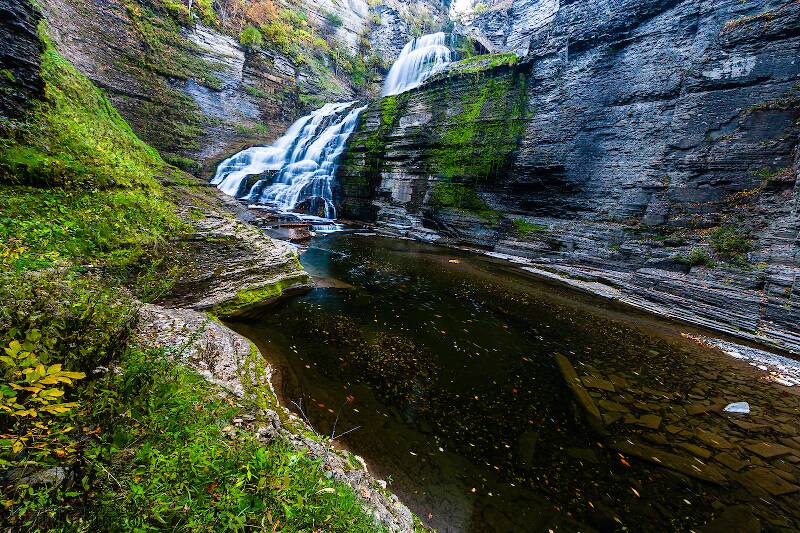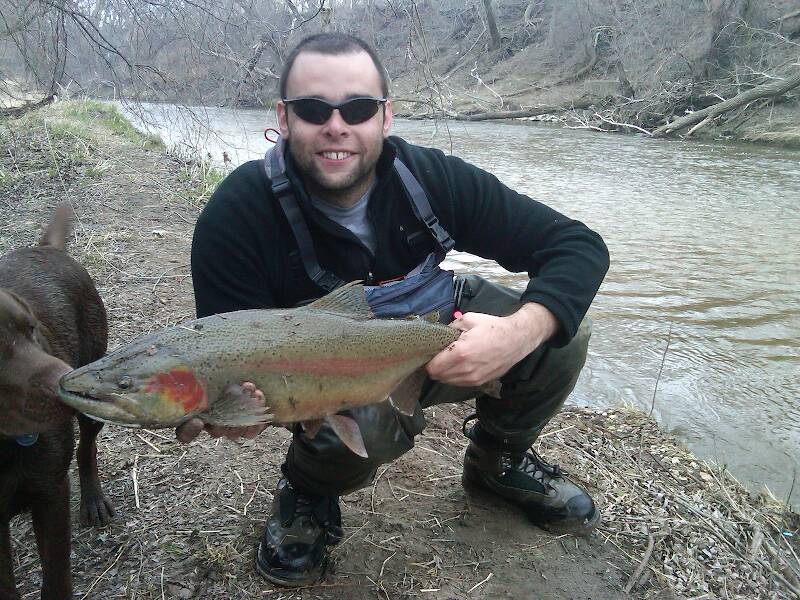
Salmonflies
Pteronarcys californica
The giant Salmonflies of the Western mountains are legendary for their proclivity to elicit consistent dry-fly action and ferocious strikes.
Featured on the forum

This one was surprisingly straightforward to identify. The lack of a sclerite at the base of the lateral hump narrows the field quite a bit, and the other options followed fairly obvious characteristics to Clostoeca, which only has one species, Clostoeca disjuncta.

Troutnut is a project started in 2003 by salmonid ecologist Jason "Troutnut" Neuswanger to help anglers and
fly tyers unabashedly embrace the entomological side of the sport. Learn more about Troutnut or
support the project for an enhanced experience here.
Wbranch on Mar 11, 2013March 11th, 2013, 7:17 pm EDT
"Doesn't the former guarantee the latter, Matt?;)"
Duh, shucks mister, I done got only ta da eight grade but still I tink I can cast dat ole wooden pole of yourn furder dan u can!
Duh, shucks mister, I done got only ta da eight grade but still I tink I can cast dat ole wooden pole of yourn furder dan u can!
Catskill fly fisher for fifty-five years.
Entoman on Mar 11, 2013March 11th, 2013, 7:28 pm EDT
Prally so! But I ain't got no fiancy piece of paper sayin difrunt like dem utha fellers..
"It's not that I find fishing so important, it's just that I find all other endeavors of Man equally unimportant... And not nearly as much fun!" Robert Traver, Anatomy of a Fisherman
Kschaefer3 on Mar 12, 2013March 12th, 2013, 5:27 am EDT
Then I palmer the hackle backwards to the top of the tail where the wire is tied in and then counter-wrap the wire over it forward, whip finishing at the head per usual.
Sayfu
Posts: 560
Posts: 560
Sayfu on Mar 12, 2013March 12th, 2013, 6:29 am EDT
I do believe that was the method used by the Pheasant Tail inventor (can't think of guy's name right now?) I've used that method lately on my pheasant tail soft hackles, wrapping down the abdomen pheasant tail fibers, and then copper ribbing forward securing the fibers.
Jmd123 on Mar 12, 2013March 12th, 2013, 7:02 am EDT
I am actually not a Spey fisherman, not much of a steelheader period, but I like the way the hackle sits on the fly when wound from head to tail and not vice versa. Personal preference, I guess...I tie my Elkhair Caddis the same way, using very fine wire so as not to add any weight to a dry fly. I think in both cases the wire adds a little flash and segmentation to the fly.
Jonathon
Jonathon
No matter how big the one you just caught is, there's always a bigger one out there somewhere...
Wbranch on Mar 12, 2013March 12th, 2013, 7:10 am EDT
Sayfu,
I found this on-line;
"Over 600 species of mayflies dwell in North America, and most of them are small and brown when they are nymphs. Thus the small, brown Pheasant Tail Nymph suggests a wide range of living creatures that trout are fond of munching. In rivers, it resembles pale morning duns, blue-winged olives, March browns, and a host of others. In lakes, it's a darn good representation of a Callibaetis nymph.
Originally tied by Frank Sawyer, the Pheasant Tail Nymph is one of the oldest of modern nymphs. A few good wrinkles have been added over the years, such as the peacock thorax, optional beadhead, etc., but when you peel them away, it's still Sawyer's elegantly simple, generically suggestive, devastatingly effective nymph."
I found this on-line;
"Over 600 species of mayflies dwell in North America, and most of them are small and brown when they are nymphs. Thus the small, brown Pheasant Tail Nymph suggests a wide range of living creatures that trout are fond of munching. In rivers, it resembles pale morning duns, blue-winged olives, March browns, and a host of others. In lakes, it's a darn good representation of a Callibaetis nymph.
Originally tied by Frank Sawyer, the Pheasant Tail Nymph is one of the oldest of modern nymphs. A few good wrinkles have been added over the years, such as the peacock thorax, optional beadhead, etc., but when you peel them away, it's still Sawyer's elegantly simple, generically suggestive, devastatingly effective nymph."
Catskill fly fisher for fifty-five years.
Sayfu
Posts: 560
Posts: 560
Sayfu on Mar 12, 2013March 12th, 2013, 8:06 am EDT
Wbranch,
Sawyer yes, I thought of it after my post. And I too have read the fact the PT nymph does represent well a number of species of Mayflies. I even use that flat 70 denier thread in a reddish brown color (UTC) that I can't find by any other maker. It closely resembles the PT coloration. And for my BWO soft hackle emergers?...I use the PT nymph concept with peacock herl for the abdomen, and either a brown Partridge feather for the hackle, or starling in the very small size.
Sawyer yes, I thought of it after my post. And I too have read the fact the PT nymph does represent well a number of species of Mayflies. I even use that flat 70 denier thread in a reddish brown color (UTC) that I can't find by any other maker. It closely resembles the PT coloration. And for my BWO soft hackle emergers?...I use the PT nymph concept with peacock herl for the abdomen, and either a brown Partridge feather for the hackle, or starling in the very small size.
Quick Reply
Related Discussions
Topic
Replies
Last Reply
1
Jan 7, 2009
by Phishheaduj
by Phishheaduj





